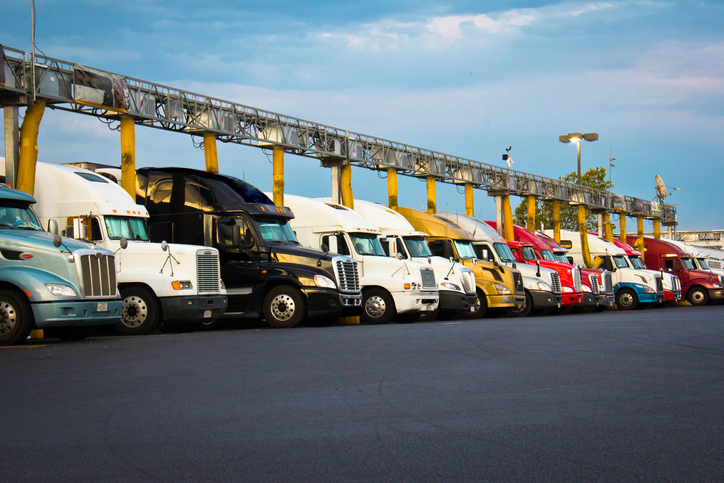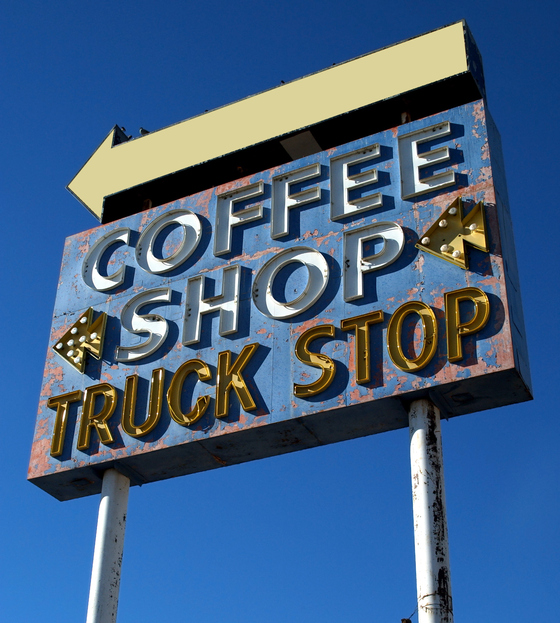Editor’s note: Based in London, Ben Moncrieffe is an account director and automotive lead, EMEA, at market research firm C Space. This is an edited version of a post that originally appeared under the title, “The death and rebirth of the service station.”
 Service stations and interstate rest stops are at an existential crossroads. Why do they exist? Fuel and rest. Fuel for the car we’re driving; fuel for our bodies and minds; and rest if we’re doing a long journey. Oh, and bathroom breaks. But what happens when we don’t need to stop as frequently as we do today?
Service stations and interstate rest stops are at an existential crossroads. Why do they exist? Fuel and rest. Fuel for the car we’re driving; fuel for our bodies and minds; and rest if we’re doing a long journey. Oh, and bathroom breaks. But what happens when we don’t need to stop as frequently as we do today?
Service stations can’t rely solely on our need to stop. Rather, they’ll have to inspire us to.
Technology is changing our mobility. Electric cars are becoming common, and battery technology continues to improve. Sales of new electric cars worldwide surpassed one million units in 2017 – a record volume. This represents a growth in new electric car sales of 54 percent compared with 2016. Predictions are that sales will increase to 11 million in 2025 and then to 30 million in 2030. Even Shell’s CEO announced last year that the next car he purchases will be electric.
Eventually, we will move up the autonomous technology levels, darting through cities and covering vast distances in our driverless cars. Today we need to consider the growth of electric vehicles and the implications for charging them. Infrastructure is nowhere near where it needs to be but new charging points are popping up at service stations, be that one of the many types of public charging services or the Tesla-style Supercharger stations, which charge your battery in about 30 minutes. Long term, we have to plan for technology improving at a rate of knots, both in terms of battery capacity (as a result, range) as well as charging infrastructure (as a result, charging time).
The big boys have already started to adapt, with Shell, BP and Total all investing in or purchasing electric charging businesses. With the increased time a driver may need to spend at a service station, you have to ask if people will want to hang around one for an extended period of time. Drivers will likely find more desirable places to go and wait, or they may just decide to charge at their destination.
Rethinking its purpose
 With fuel or energy no longer a reason to use a service station, we need to rethink its purpose and what it can offer. Right now, most service stations are not the kinds of places you want to go to eat and shop, unless you find yourself in an out-of-town outlet village like Bicester or are lured by the great American road trip kitsch of truck stops like Iowa 80. As failing retailers like Toys“R”Us, Jessops and Sears have discovered, it’s no longer enough to just be a legacy shop. Retail environments – even service stations – need to be must-visit destinations that offer more in terms of utility, entertainment and, above all, an outstanding customer experience.
With fuel or energy no longer a reason to use a service station, we need to rethink its purpose and what it can offer. Right now, most service stations are not the kinds of places you want to go to eat and shop, unless you find yourself in an out-of-town outlet village like Bicester or are lured by the great American road trip kitsch of truck stops like Iowa 80. As failing retailers like Toys“R”Us, Jessops and Sears have discovered, it’s no longer enough to just be a legacy shop. Retail environments – even service stations – need to be must-visit destinations that offer more in terms of utility, entertainment and, above all, an outstanding customer experience.
One solution: add hospitality to the mix. Hotels are already catching on to this. Hilton announced a partnership with Tesla back in 2015 and continues to outfit more of their locations with charging stations. Other hotel chains have followed suit, and it seems like a no-brainer for customers to plan ahead, book a nice hotel away from the highway to use a gym, unwind at a spa, enjoy a meal or even stay the night. Little America in Wyoming offers a 500-acre hotel with a golf course, swimming pool, fitness center and business center – which is starting to feel more like something a major hotel chain could offer.
Service stations are unique places. They sit at the intersection of retail, hospitality, energy and mobility. All four are experiencing disruption. It’s no longer enough for a store, a service station, a hotel to just offer one thing. The experience has to provide additional benefits beyond the one thing – to pull customers in and offer them reasons to keep them there. A drive-to experience.
If you’re driving across the Midwestern plains of the United States, you should take exit 284 off of Interstate 80. It’s here, 25 miles west of the Mississippi River, in Walcott, Iowa, where you’ll find the world’s largest truck stop, simply called Iowa 80.
“Some say Iowa 80 Truckstop is like a small city, others have likened it to a trucker’s Disneyland, all can agree it is a place not to be missed,” proclaims the Iowa 80 Web site. While it’s not as glamorous as Disney, Iowa 80 is a destination for truckers and road trippers – complete with movie theater, a truck showroom, a barber shop, restaurants, a dentist, shower facilities, a laundromat and even a “dogomat” where your pup can get a bath.
While megalithic service stations like Iowa 80 are designed for the distinct needs of those traveling America’s vast highway system, they also represent the direction service stations might need to take for future survival. Because the truth is, without serious innovation, service stations will end up like deserted Wild West main streets.
Opportunity
We need to start reframing the question, “Why do we need to stop?” to “What inspires us to stop?” I don’t anticipate (or desire) all service stations to turn into new-wave examples of Iowa 80, but there is an opportunity to think about how to move the Main Street experience to the Interstate. With autonomous cars on the rise, we may even spend more time in our cars. That means we’ll be on the roads more. That’s more opportunity.
The big energy providers need to be thinking about the implications, designing service stations into retail or experiential sites that cater to drivers’ fuel needs in more ways than one.
